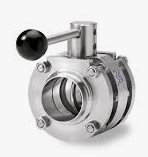

Inquiry

Project Review

Machining

Quality Control

Pass/Fail

Delivery
There are many types of valves, each with its own advantages and disadvantages. Below is an analysis of the pros and cons of five major valve types, including gate valves, butterfly valves, ball valves, globe valves, and plug valves.

1. Gate Valve
A gate valve is a valve where the closing element (gate) moves perpendicular to the flow direction. It is primarily used in pipelines to fully open or fully close the flow and is generally not suitable for flow regulation. It can be used in both low-temperature/low-pressure and high-temperature/high-pressure applications but is typically not used for transporting slurries.
1.1 Advantages:
① Low fluid resistance.
② Requires minimal torque to open/close.
③ Can be used in bidirectional flow pipelines (flow direction is unrestricted).
④ When fully open, the sealing surface suffers less erosion from the medium compared to globe valves.
⑤ Simple structure with good manufacturability.
⑥ Compact in length.
1.2 Disadvantages:
① Large size and height when open, requiring more installation space.
② Friction between sealing surfaces during operation leads to wear, potentially causing scratches at high temperatures.
③ Most gate valves have two sealing surfaces, making machining, grinding, and maintenance more difficult.
④ Slow opening/closing speed.
2. Butterfly Valve
A butterfly valve uses a disc that rotates 90° to open, close, or regulate fluid flow.
2.1 Advantages:
① Simple structure, compact size, lightweight, and material-efficient.
② Quick operation with low flow resistance.
③ Suitable for media containing suspended solids and, depending on sealing strength, powder/granular media.
④ Ideal for ventilation/dust removal pipelines, widely used in metallurgy, light industry, power, and petrochemical gas/water pipelines.
2.2 Disadvantages:
① Limited flow regulation—95% flow is achieved at just 30% opening.
② Due to structural and sealing material limitations, not suitable for high-temperature/high-pressure systems (typically ≤300°C, ≤PN40).
③ Sealing performance is inferior to ball and globe valves, making it unsuitable for high-sealing-demand applications.
3. Ball Valve
Evolved from plug valves, a ball valve uses a rotating ball (90° turn) to open/close. It is mainly used for shutoff, flow diversion, and direction change. V-notch ball valves also offer good flow control.
3.1 Advantages:
① Lowest flow resistance (near zero).
② Reliable in corrosive media and low-boiling-point liquids (no sticking even without lubrication).
③ Excellent sealing across a wide pressure/temperature range.
④ Fast operation (some models open/close in 0.05–0.1s), suitable for automated systems.
⑤ Self-aligning in the closed position.
⑥ Bidirectional sealing capability.
⑦ Sealing surfaces are isolated from media when fully open/closed, preventing erosion.
⑧ Compact and lightweight, ideal for cryogenic systems.
⑨ Symmetrical design (especially welded types) withstands pipeline stress well.
⑩ Can handle high-pressure differentials when closed.
⑪Fully welded ball valves can be buried underground, with a 30-year lifespan—ideal for oil/gas pipelines.
3.2 Disadvantages:
① PTFE (Teflon) seals—while chemically inert and stable—have high thermal expansion, cold-flow sensitivity, and poor heat resistance (max 180°C, long-term use recommended only ≤120°C).
② Inferior flow control compared to globe valves, especially in pneumatic/electric models.
4. Globe Valve
A globe valve has a linear-moving disc that regulates flow proportionally to its stroke. It is ideal for shutoff, throttling, and flow control.
4.1 Advantages:
① Less friction on sealing surfaces than gate valves, enhancing durability.
② Smaller opening height (¼ of seat diameter).
③ Single sealing surface, easier to manufacture and maintain.
④ High-temperature resistance (common in steam systems due to graphite-asbestos packing).
4.2 Disadvantages:
① Higher flow resistance due to directional changes.
② Slower operation than ball valves.
5. Plug Valve
A plug valve uses a rotating cylindrical/conical plug (90° turn) to open/close flow. It comes in 2-way, 3-way, and 4-way designs, similar in principle to ball valves.
5.1 Advantages:
① Quick, easy operation.
② Low fluid resistance.
③ Compact, lightweight, and easy to maintain.
④ Good sealing.
⑤ Flow direction is unrestricted.
⑥ No vibration or noise.
5.2 Disadvantages:
① High torque required due to large sealing surface.
② Limited to smaller sizes (heavy plugs restrict large diameters).
③ Inverted plug design for large valves may compromise sealing.
About AJL Machining:
AJL Machining is a professional and industry-leading one-stop workshop for custom metal parts services. We have our own factory and a reliable network of partners that enable us to cater to your requirements ranging from prototypes to large-scale production. Our competitive edge is our ability to ensure that all of your parts are produced according to specifications, within budget, and delivered on time to meet your evolving demands. Presently, we serve over 80% of our business to multinational corporations in China, as well as overseas customers.
To learn more, please don't hesitate to contact us via email at sales@ajlmachining.com, or visit our website at www.ajlmachining.com

AJL Machining is a professional and industry-leading one-stop shop for custom metal parts services. We have our own factory and a reliable network of partners that enable us to cater to your requirements ranging from prototypes to large-scale production.
Add: No 58, Chenghu Road, Kunshan, Suzhou City, Jiangsu Province, China 215333
Email:sales@ajlmachining.com
Tel: +8613522650203